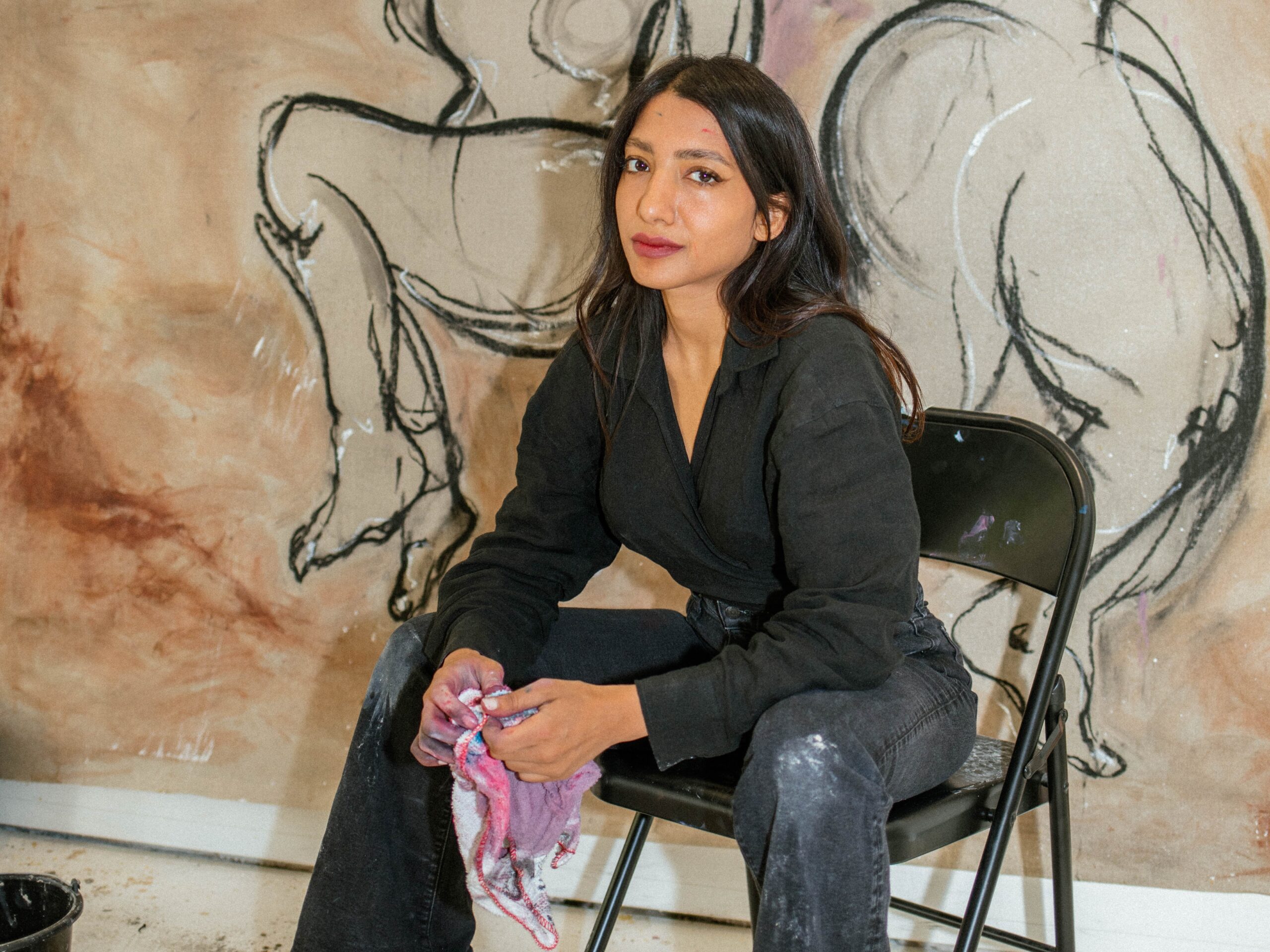ARTIST
Exploring Identity and Mythology: Maitha Abdalla’s Theatrical Approach to Art

Maitha Abdalla is a multi-disciplinary Emirati artist born in 1989. She offers an alluring blend of performance, painting, and sculpture to the field of contemporary art. Through her unique amalgamation of film, photography, and theatrical elements, Abdalla’s work can reach deep into themes such as mythology, folklore, and psychology. Her artistic journey is bold-the exploration of identity, vulnerability, and social conditioning-eloquently created through a lens of drama and abstraction. She is incredibly insightful in commenting on the self through both the body and medium to voice the complexities of the human experience with every work.
Maitha Abdalla is a multidisciplinary artist whose practice spans painting and sculpture, film, and performance in an inquiry into personal identity, cultural narratives, and the human condition. Born in 1989 and having obtained her Bachelor of Visual Arts from Zayed University in 2015, Abdalla is a central figure in the UAE’s contemporary art scene.
Abdalla is highly influenced by the constructed and performative nature of theatre, the ability to create a place within the performative realm that furthers a conceptual space which questions and rethinks the frames of social dictations, personal experiences, and cultural memories. Fantastical characters combined with surreal landscapes invite viewers into a world somewhere between reality and imagination within her often created works. Abdalla draws her influences from folklore and mythological inspirations, seeking within the stories that have so long impacted Emirati culture. Working with ancient tales, intertwined with themes taken from more modern connotations, her art reflects not only on the past but also challenges contemporary social conditioning. The thematic content of her works frequently relates to gender roles, societal expectations, and psychological explorations; these provide an intimate touch to her works while making them universally relatable.
Abdalla’s practice often interrogates the self, as she builds characters that represent varied personas of herself. These characters live in constricted domestic settings-a metaphor, perhaps, for the constraints placed on them by society. It is in such spaces that the vulnerabilities of the characters become exposed, and their turmoil may be shared at some subliminal level with the viewer. For Abdalla, art is not only a medium of expression but one of confrontation; thus, the opportunity to research and question the ideas and experiences that have shaped her world. It is through such investigations of the self that she has been able to create works of art that simultaneously vibrate on both personal and universal levels-her characters and scenes personifying emotions and narratives that many can identify with.
Abdalla assumes a unique bodily attitude of creation in her art. Often, with thick textures of oil and acrylic paint rich in detail and emotion, she uses her hands to apply paint. The gestural movements-like tracing her figure with smears of charcoal-enable her body to be an active and integral part of the very creation process. This technique reveals Abdalla’s considerate opinion of art as an extended performance-that every brushstroke or charcoal mark is, literally, a sequel to the performance in her tussle between abstraction and representation. The physical aspect of her work adds another layer of depth to her exploration of identity since it really underlines the relationship between the body and mind, and, equally, the self and the external world.
Abdalla’s work tends to be dramatic and melancholic, an emotion enhanced by the theatrical and performative nature of her approach. This melancholy, however, is the bottom line for the power both in the character she creates and in treading hard subjects such as social conditioning and gender. Her artwork fluctuates between vulnerability and being empowered while her characters confront those societal norms that want to contain them. It thus sets up a duality that has come to typify Abdalla’s work: offering viewers and opportunity for reflection about personal experiences of vulnerability and strength, or identity.
